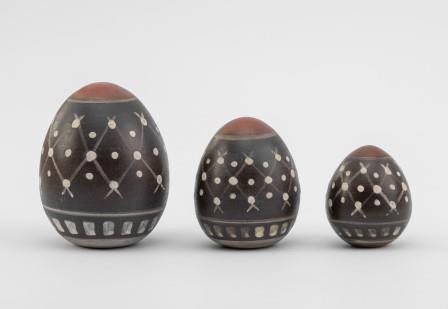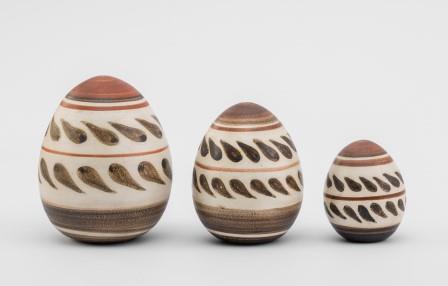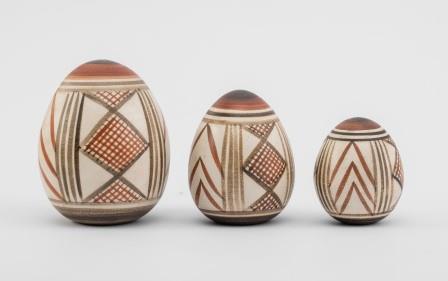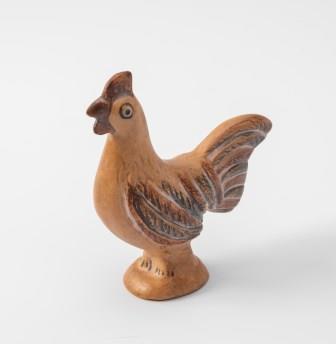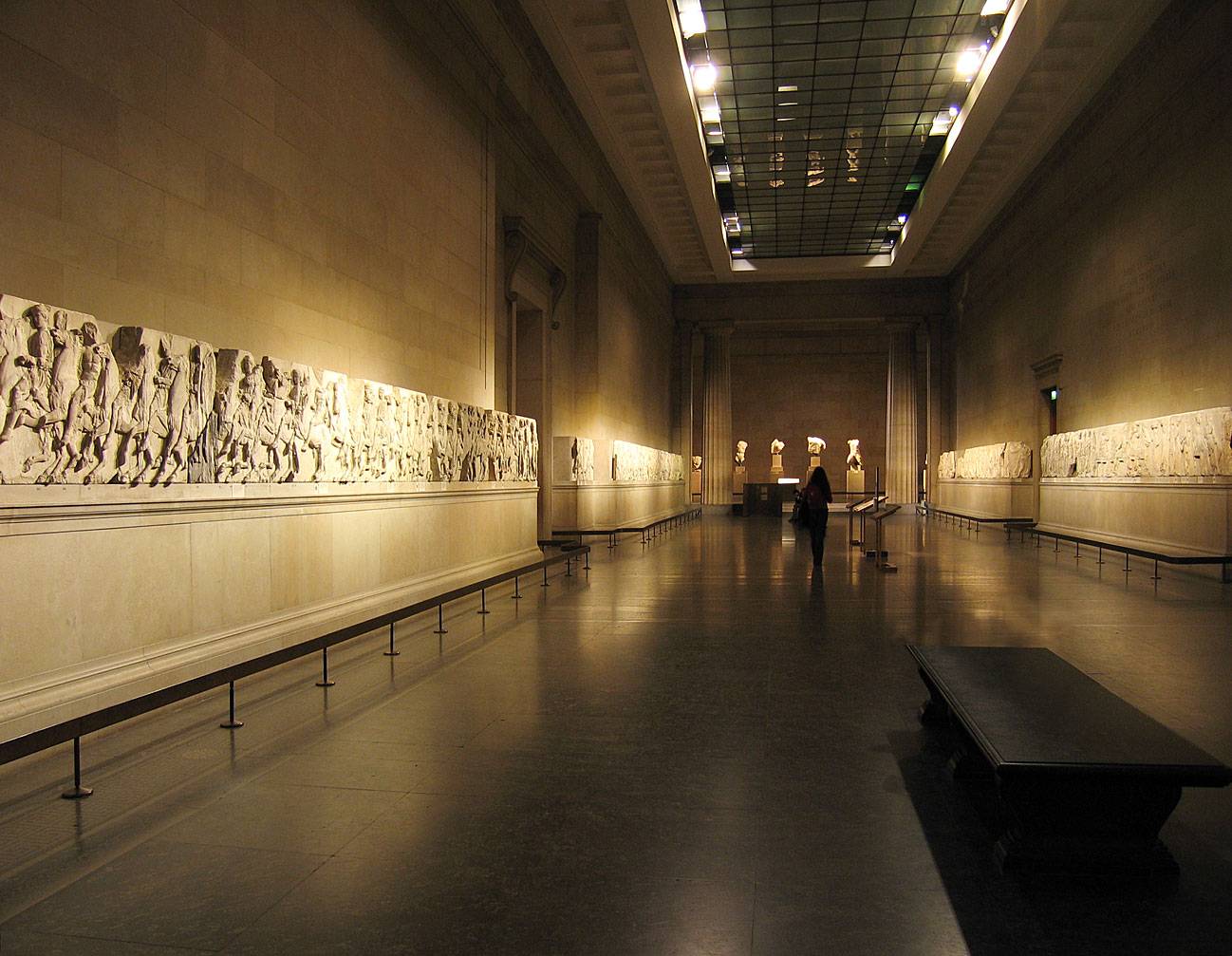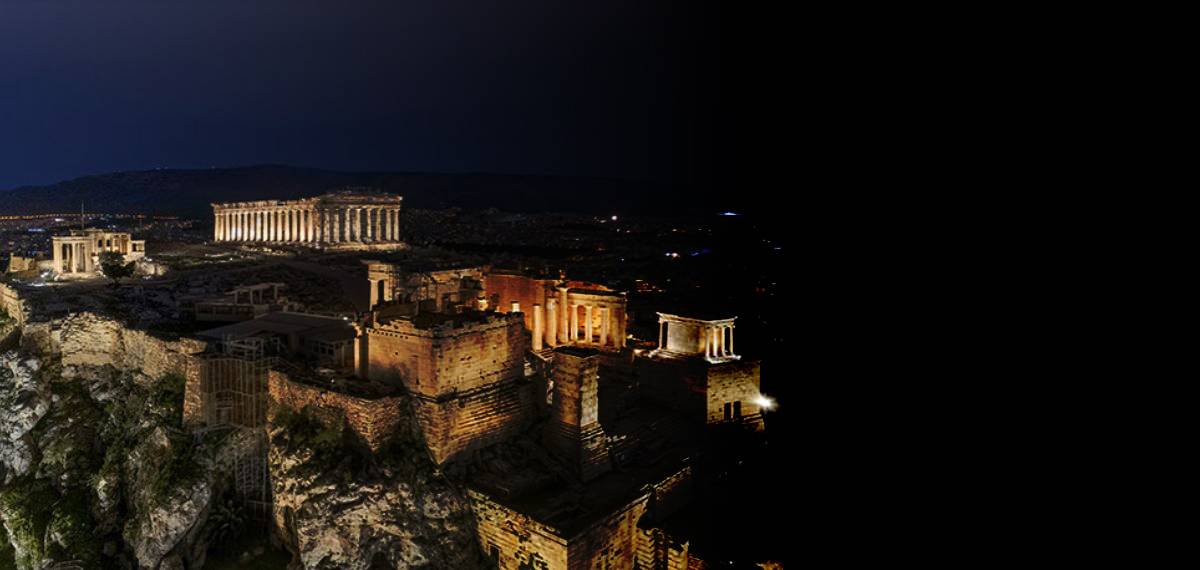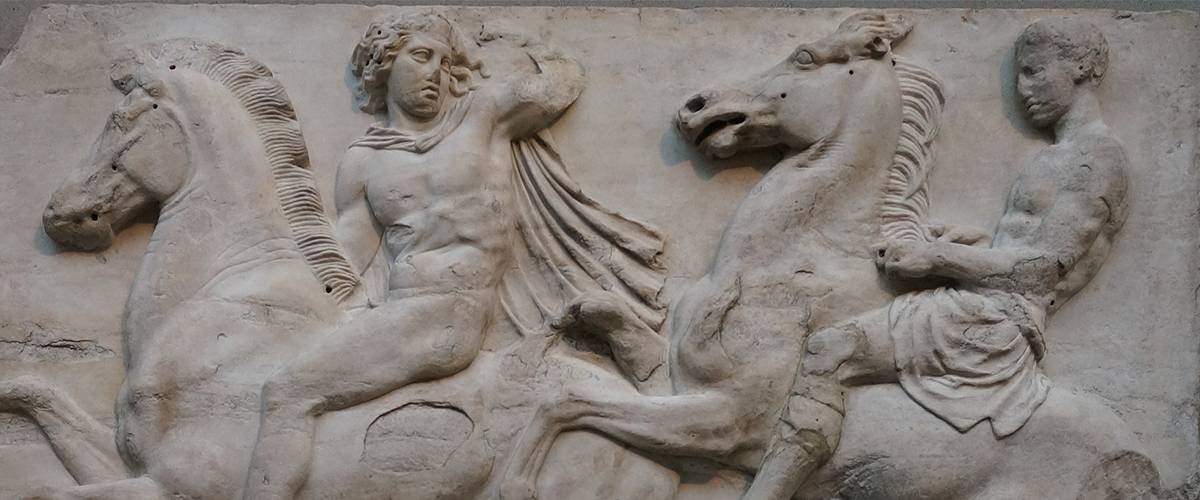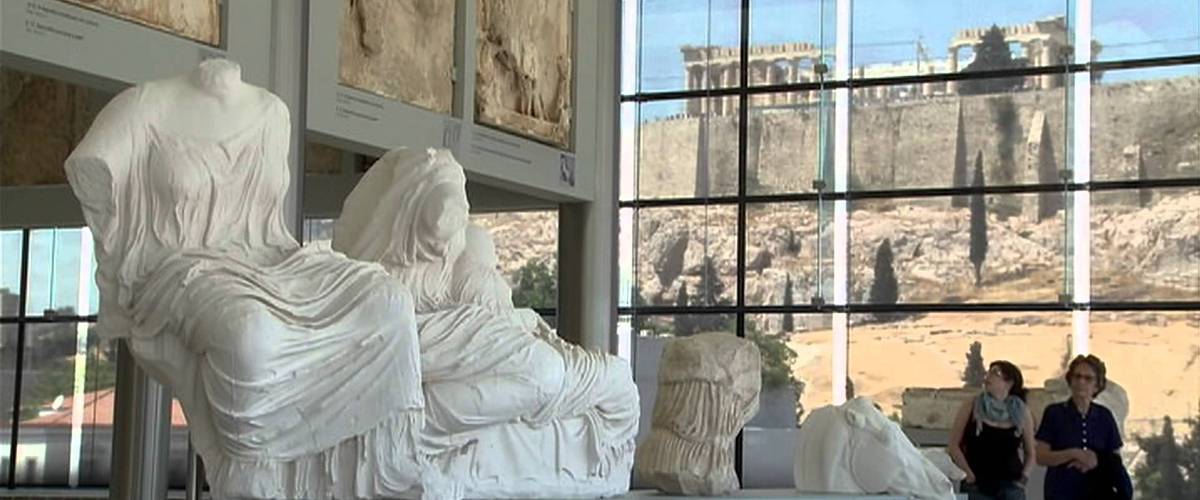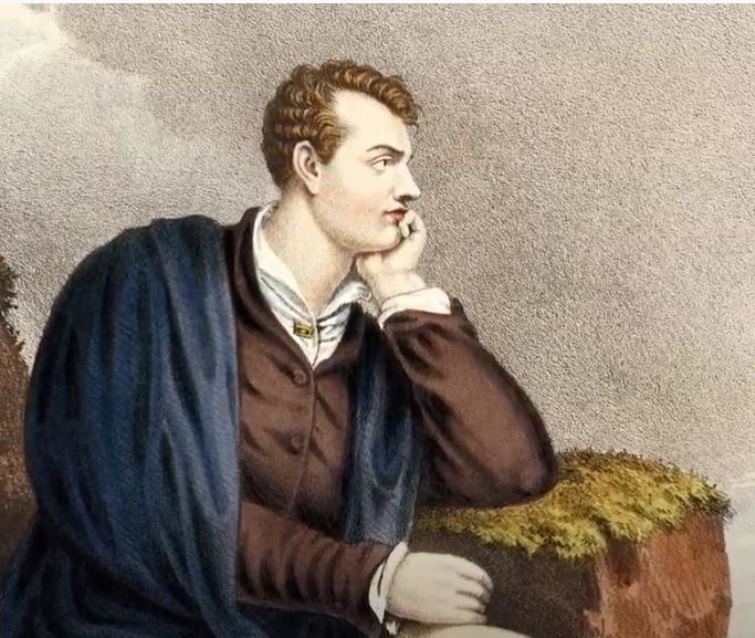On April 19, 2024, mournful Greece will commemorate the bicentennial of the death of her dazzling adopted son, George Gordon, 6th Baron Byron (1788-1824), whose personal involvement in the Greek War of Independence (1821-1829) turned European attention to the plight of Greece under Ottoman Turkish rule and resulted in the establishment of an independent Greek state for the first time since the Turkish conquest of 1453. Lord Byron died at the age of 36 of malaria complications in Missolonghi, in the land whose captive beauty he mourned in Canto II of his immensely popular “Childe Harold’s Pilgrimage” (1812-1818), which made the author a European celebrity overnight. Byron’s fame extended worldwide in the 19th century, with several cities in the US named after him, including in Iowa and Illinois.
Byron’s literary alter ego, Childe Harold, sets forth on a secular pilgrimage Byron himself undertook in 1809 at the time of Napoleonic wars. In Canto I, the hero travels through the southern periphery of Europe, Portugal, and Spain, and laments the fate of Spain fighting for its independence from Napoleon at the height of the Peninsula War. In Canto II, Byron heads to Greece and writes of his first encounter with the land of Plato, Aristotle, Sophocles, Aristophanes, and Pheidias. Educated at Trinity College, Cambridge, Byron was well versed in Greek literature and philosophy, and it pained him to see this famed land languishing under Ottoman Turkish occupation. In Canto III of his massive 16,000-line epic poem “Don Juan” (1819-1824), Byron laments Greece’s lost glory:
“The isles of Greece! the isles of Greece!
Where burning Sappho loved and sang,
Where grew the arts of war and peace,
Where Delos rose, and Phœbus sprung!
Eternal summer gilds them yet,
But all, except their sun, is set.”
After visiting Athens, Byron became a champion of the cause of the Elgin Marbles which remains unresolved today, with Greek and British prime ministers trading harsh words over their fate earlier this year. Removed from Athens by Lord Elgin between 1801 and 1812, half of the surviving Parthenon Marbles remain in the British Museum, a move Byron savaged in his 1811 poem “The Curse of Minerva.”
Last summer, I retraced Byron’s 1809 Greek and Albanian travels and visited the old Turkish fortress in Janina, which is today in northern Greece. Here Byron met Ali Pasha, the ruler of greater Albania, who invited the young poet to his palace in Tepelene, now in central Albania. I explored the ruins of this Albanian fortress as well and stood on the spot where Byron started composing “Childe Harold” − the edge of a cliff over a swift mountain steam rushing towards the horizon in the far distance. Sublime does not begin to describe the location that birthed the Byronic character, forever associated with his creator.
The alienated, cynical, brooding, and dejected hero he created and which to this day bears his name, Byronic, inspired countless literary characters from Rochester (“Jane Eyre”) and Heathcliff (“Wuthering Heights”) to Julien Sorel (“The Red and the Black”) and Edmond Dantès (“The Count of Monte Cristo”). In Alexander Pushkin’s 1825-1832 novel in verse “Eugene Onegin,” the main character, who is described as a “Moscovite in Harold's cloak,” is an avid reader of “Childe Harold” and tries to emulate the Byronic ideal in every possible way, to the bewilderment of his friends and foes. Needless to say, Pushkin wrote the novel under the watchful gaze of a Byron portrait above his desk - and a statue of Napoleon on the mantelpiece - the two quintessential sources of poetic inspiration of the 19th century!
Emerging out of the initial thrill of the French Revolution of 1789 and the eventual disillusionment with the direction of the revolutionary project and the meteoric rise and fall of Napoleon Bonaparte, the Byronic hero captured the Zeitgeist of the age and spoke to the alienation of an entire generation of European young men who became weary of unhindered idealism which invariably devolved into fratricidal slaughter. Anguished and cynical, the Byronic hero resurfaced in the 20th century in the characters portrayed by actors such as Marlon Brando, James Dean, and Heath Ledger, and still haunts the cinematic universes of Star Wars, James Bond, Indiana Jones, Twilight, and, of course, Batman.
“Childe Harold” catapulted Byron to international fame - and many shorter poetic works (The Giaour, The Bride of Abydos, The Corsair) were created at the peak of his literary stardom. As a hereditary member of the House of Lords, Byron delivered two notable speeches in Parliament, but his scandalous bisexual escapades did raise a few eyebrows in England - and he left for continental Europe once again in 1816 - never to return.
After visiting the battlefield of Waterloo (more in my May column), Byron traveled along the Rhine to Switzerland − where he hosted Percy Shelley and Mary Shelley - at the time when Mary was writing yet another masterpiece of the Romantic age, “Frankenstein.” Byron spent several years in Italy, whose fate he glorified and lamented in Canto IV of “Childe Harold.” And in 1823 he embarked from Genoa on his second and final trip to Greece. He offered the Greek independence cause financial assistance and trained troops who were fighting for their homeland in the aftermath of the Declaration of Independence proclaimed in 1821 on March 25 − still celebrated today as Greek Independence Day.
In 1824 Byron wrote: “I gave [Greece] my time, my health, my property, and now I give my life. What could I do more?”
After Byron’s death, the fate of ravished Greece was captured in all its agony by Eugène Delacroix in his 1826 painting “Greece on the Ruins of Missolonghi” and in his “Faust,” Johann von Goethe dedicated to Byron the tragic character of Euphorion, a youth who, like Icarus, flew too close to the sun and crashed to his death. Byron’s death stunned Europe; England, France and Russia, enemies from the Napoleonic wars, united their efforts in support of Greek independence - which was finally recognized in July of 1832 at the Treaty of Constantinople. Greece was the first Ottoman Empire subject to receive full independence and international recognition.
A poem from Byron
On Jan. 22, 1824, three months before his death, Byron wrote a poem that included the following lines:
“Awake (not Greece—she is awake!)
Awake, my Spirit! Think through whom
Thy life-blood tracks its parent lake
And then strike home!
...
Seek out—less often sought than found—
A Soldier's Grave, for thee the best;
Then look around, and choose thy Ground,
And take thy rest.”
RIP, Greece’s Euphorion, the inimitable champion of freedom, Lord Byron…

Anna Barker received her Ph. D. in Comparative Literature in 2002 with a dissertation in translation studies. At the University of Iowa she has taught courses in the English Department, in Comparative Literature, in Russian Literature, and in the Honours Programme.
This article was first published in the Iowa City Press Citizen, on 05 April 2024.
The reunification of the Parthenon Marbles represents an issue about which I care deeply but that I have frequently despaired of ever seeing come to fruition. And yet, seemingly insurmountable tasks occasionally have a tendency to loosen under pressure from other forces — social, economic, geopolitical — that suddenly offer a glimmer of light. Such, I believe is the case with the Parthenon Marbles.
Tom Flynn
08 March 2022

Your Excellency, Mrs. President of the Hellenic Republic, Madam Vardinoyannis, Mr. President of the Acropolis Museum, honoured guests, women of the world.
Let me begin by thanking the Vardinoyannis Foundation and the Acropolis Museum for the very kind invitation to join with you all in Athens this evening. This is one of my favourite places in the world. I was here at the opening of the museum in 2009 and have been back on many occasions since. So it’s an enormous pleasure and honour to be amongst you and to see Professor Pandermalis again.
I found myself writing these words a week ago at a moment when for the first time in my life I sensed a genuine existential threat to the world order. That feeling of unease was amplified by the fact that my eldest son found himself stranded in Moscow where he has been teaching English for the past seven months to Russian schoolchildren. Restricted air travel into and out of Russia last week meant that he had to fly to Egypt in order to find a connecting flight back to London. But at least he got home safe. Not so, sadly, the numerous Ukrainian children trapped in their bombarded cities or trekking to safety in freezing temperatures under heavy artillery fire. I had hoped that by the time I delivered this talk the situation would have calmed down, but sadly the signs are ominous in the extreme. Encouragingly, however, the international community has shown rare solidarity in opposing the invasion of Ukraine.
So unity is one of the themes I’d like to explore this evening, to emphasise the importance of building and sustaining unity in Europe and where possible across the world. And culture can play a significant part in the process of unification. You can probably already see where I’m going with this, so let me turn to the main event. We are gathered here to celebrate International Women’s Day and I applaud the Foundation for linking the event to the topic of the Parthenon Marbles. At least I assume that is why I was invited? Because, yes, the Marbles are indeed a topic close to my heart, as close to my heart as are the women in my life for I am blessed with three sisters, which has given me invaluable insights into how feminine instinct is so often the right one and the masculine instinct frequently misguided.
So allow me to briefly explain the genesis of my commitment to the Marbles issue. I wrote an article for The Spectator magazine some years ago on the topic of museum deaccessioning. One person who saw that article was Eleni Cubitt, a founder and for many years the driving force behind the British Committee for the Reunification of the Parthenon Marbles, and who I’m sure will be remembered fondly by many of you here this evening. Eleni contacted me shortly after the article appeared and invited me for lunch at her favourite Greek restaurant in Islington. It became the first of many lunches and afternoon teas at her cosy little house in Highbury where we exchanged ideas and books over apple pastries and discussed the ways in which we might persuade more people to the Marbles cause. Eleni was a dear friend and a huge inspiration to me and to everyone involved in the Reunification campaign and her death a few years ago left a big hole in our lives.
My friend the American sculptor Richard Rhodes gave a TedTalk in Seattle recently in which he quoted the writer David Brooks, who advised that one should always have a permanent commitment to tasks that cannot be completed in a single lifetime. This resonated with me, for it prompted me into asking myself whether I was committed to anything, the completion of which might not be achievable in my lifetime. I concluded that the reunification of the Parthenon Marbles represents an issue about which I care deeply but that I have frequently despaired of ever seeing come to fruition. And yet, seemingly insurmountable tasks occasionally have a tendency to loosen under pressure from other forces — social, economic, geopolitical — that suddenly offer a glimmer of light. Such, I believe is the case with the Parthenon Marbles.
I was in my late teens when I first visited Athens and since then I have returned to this beautiful place more often than to any other European city. And this is where the beautiful goddesses enter the picture. I wrote my doctoral thesis on the great chryselephantine statue of Athena erected in the cella of the Parthenon during what is often referred to as the Periclean Building Programme of the mid-fifth century BCE. It was not the statue of the goddess that interested me so much as the nineteenth-century British reactions to her physical composition. As you are aware, she was constructed out of gold and ivory — and here I acknowledge the work of my American colleague Kenneth Lapatin, who has written the definitive account of the chryselephantine technique in the ancient world, which remains an invaluable resource on the subject. While I too became fascinated by Pheidias’s great gold and ivory creations, how and why they were made, what they might have meant to Athenian citizenry and so on, my own research was concerned with the controversy that grew up among European artists, critics, and academics in the early nineteenth century.
Archaeological and philological speculations about the lost statue of Athena, and the Zeus at Olympia began to appear around the same time that the Parthenon Marbles arrived in London. One of the most significant of such studies was the Jupiter Olympien, a reconstruction of the ancient chryselephantine technique assembled by the French academic Quatremère de Quincy in 1805. These various researches divided the artistic community, separating those who saw the gold and ivory tradition as evidence of the widespread use of polychrome sculpture among the ancient Greeks — and therefore an acceptable practice to emulate — and those who viewed it as antithetical to the aesthetic of pure white marble, which became the idée fixe of the neoclassical imagination. That cleaving to the neoclassical aesthetic survived into the twentieth century when even the Parthenon Marbles in the British Museum were subjected to the abrasive obsession of Joseph Duveen whose workmen misguidedly sought to restore the Marbles’ “original” whiteness by scrubbing them. It reminded me of the words of Richard Payne Knight, who, when confronted with the first lawnmowers in the early 19th century, said of their inventors: — “To improve, adorn, and polish they profess, but shave the goddess whom they came to dress.”
Of course, it was the luxurious and extremely valuable materials from which the Athena Parthenos was made that eventually brought about her terminal dismemberment. The gold plates were designed to be removable so that they could be used in the event of war or external threat. She was, then, literally a store of wealth, a convertible asset. The detachable nature of the gold plates may also have contributed to her eventual destruction for it seems possible that the tyrannical dictator Lachares fearing capture, stole the gold plates from the statue before fleeing Athens in disguise in the third century BCE.
In the early nineteenth century any number of lofty arguments were deployed to dissuade contemporary artists from emulating the ancient mixed media creations. For some critics the ‘realism’ suggested by their contrasting materials and particularly the use of ivory, veered dangerously close to waxworks, then commonly used for medical anatomical models and in Madame Tussauds lurid displays. Sculpture, it was argued, had a duty to rise above such carnivalesque persuasions. The liberal use of gold and ivory in the statue also unsettled those who looked to medieval ideas of the dubious moral connotations of luxuria. The Athena Parthenos as she was handed down in ancient testimony seemed to be the very embodiment of conspicuous consumption, luxury run rampant.
And so for me, while researching these critical reactions, the Athena Parthenos became an object of fantasy, of dreams, what she had really looked like was now lost in the mists of time, surviving only in the later written testimony of travellers like Pausanias, in a few small material fragments, and in several intriguing, small-scale souvenirs in marble of questionable reliability. An example of that category is the Varvakeion statue in the National Archaeological Museum here in Athens, which is a Roman copy and an approximation of how the Athena Parthenos might have looked. For me, Athena endures as a Parthenos Imaginaire, a figment of my fevered curiosity. Was she beautiful? I sense that is unlikely. Was she awesome? Sublime? My guess is she was all of these, a dazzling symbol of Athenian power, a triumph of the creative imagination and a demonstration of the collaborative nature of cultural production.
Now if the composite nature of the ancient chryselephantine statues was the source of their eventual demise, in time it also came to fuel the various controversies surrounding the animated academic debates about polychrome sculpture that continued throughout the nineteenth century. The nineteenth century did indeed see a kind of chryselephantine revival, one of the most notable being the encouragement provided by King Leopold II of the Belgians, who donated ivory from the Congo to Belgian artists in the hope of persuading the Belgian people of the benefits of his colonial adventure in Africa.
If any single object came to embody the various debates about the mixed media of antiquity, it was surely the polychrome gilded bronze Minerva created by the French sculptor Pierre-Charles Simart for the Duc de Luynes, which was exhibited at the Exposition International in Paris in 1855. It survives today in its original location in the family château at Dampierre en Yvelines, outside Paris. On visiting the château I found myself pondering whether the Musée d’Orsay might be a better location for the Minerva where many more people would see her and learn of the archaeological research and fascinating currents of academic taste that surrounded her creation. Like the Parthenos, she was the product of diverse skills, crafts and materials – bronze, ivory, enamel, precious stones, silver and gold. But who am I to advise on where the Minerva ought to be displayed? Surely if I’m loyal to my Parthenon logic, the Minerva belongs in the place for which she was made, standing proudly in front of Ingres’ fresco L’Age D’Or, also commissioned by the Duke, and surrounded by the polychrome interior decorations of Félix Duban, a leading exponent of Beaux-Arts Néo-Grec architecture. Like the original Parthenon ensemble, the room in which the Minerva stands is a kind of Gesamtkunstwerk, a complete, total work of art in which all the individual elements are harmonically integrated into the whole. Remove one component and the magic evaporates.
So why am I rambling on about the chryselephantine statues when we’re really here to discuss the Parthenon Marbles. Well, here’s a thought experiment. Ancient testimony informs us that during the planning stages of the Parthenon building programme, Pheidias was for a time favouring constructing the statue of Athena out of marble. The demos objected, however, insisting on the use of precious materials. Had Pheidias prevailed, might we today have surviving fragments of a colossal acrolithic cult statue of Athena as we do for that of Constantine in Rome? And how might that have changed our knowledge of the temple and its purpose?
Had such a thing survived, almost certainly Bernard Tschumi would have accommodated the ancient marble goddess as elegantly and sympathetically as he did with the surviving frieze and metopes upstairs. And here I will repeat another common criticism of the London display — the deliberate ‘inside out’ approach to their disposition. I’ll come back to this in a moment, but I think anyone who has visited this wonderful museum cannot fail to acknowledge the superior museology of the displays here in Athens.
I see this museum as unique among world museums in being an environment in which one can engage with the beauty and essential mystery of the ancient world in stunning proximity to the Parthenon itself, one of the greatest surviving monuments of the ancient world. It is not only a place to learn and dream. I see it as a kind of public studiolo, a place where the private imagination can enjoy free rein.
And here’s where I see another interesting parallel with the chryselephantine tradition. We know from the archaeological record that the Ergasterion, the workshop in which Pheidias constructed his chryselephantine Zeus at Olympia, stood alongside the site of the temple, and was orientated in such a way that its position mirrored that of the naos or cella of the temple for which the statue was destined. I meant to email Bernard Tschumi to ask whether this had been one of his reference points in deciding to position the Parthenon Galleries in relation to the temple itself — not that he needed any such pretext, for it is anyway a stroke of genius. In any event, I for one now see the orientation of the Parthenon Galleries as having an extra semantic charge, inviting me to ponder the creative practices of Pheidias and his contemporaries.
And this brings me to another point. When I was invited to speak to you this evening my first thought was: ‘What can be said about the Parthenon Marbles debate that has not been said already?” As the late great Sir Norman Palmer once quipped when getting up to speak last at a conference. ‘Everything has been said already, but not by everyone.’
I did not want to come here today to wheel out the now familiar arguments for reunification of the Parthenon Marbles. After all, I am in Athens with people far more knowledgeable about the issue than me. Over time, I have sought to focus my own contribution to the debate on the viability and sustainability of the concept of the Universal Museum, particularly as it is embodied in London. The ‘Universal’ component was eventually replaced by the notionally less controversial term, ‘Encyclopaedic Museum’, but the concept of universality has nevertheless become a fundamental tenet used by those seeking to retain the marbles in London. I don’t wish to rehearse my opposition to this concept here this evening as I vowed to try and adopt a positive outlook on this auspicious occasion. But I do want to draw attention to an aspect of the debate that is still not sufficiently explored. I refer to the continuing tendency of the British Museum to remove those specimens of the Marbles in London from their umbilical connection to the Parthenon. One former director of the museum went as far as to say, “The Elgin Marbles are no longer part of the story of the Parthenon. They are now part of another story.”
We may not understand the true meaning of the scenes enacted on the Parthenon Frieze, but we know that they are, and will remain, part of the story of the Parthenon. To suggest otherwise is akin to promulgating what recently became known as “alternative facts.” For it is arguably the very ‘story-based' nature of the Marbles that is their most notable feature. The frieze is among the earliest and most cohesive narrative projects in art history, a story of chthonic resonance to Athens and its citizenry. It is one thing to have wrenched half that story from the building itself, it is quite another to sever it altogether from its original meaning and context. Therein lies the pertinence of the concept of unification at this particular moment.
Today we are witnessing a hinge in history. A moment of potentially deep and lasting division in Europe. Countries from around the world and from all across the political spectrum have come together in unity to oppose a dangerous manifestation of fascism and a mortal threat to democracy. What is developing in Ukraine is, to borrow a phrase from Thomas Paine, “the most ridiculous and insolent of all tyrannies.”
By now you might have guessed how I’m going to conclude this brief talk. The need for unity among nations is more urgent today than at any moment since the Second World War. Unity can be expressed as it has been of late, in diplomacy and in vocal opposition to the agents of oppression and division. Following the invasion of Ukraine unity has also manifested itself in the cultural sector, whereby international organisations whose activities normally bring the world together have elected almost unanimously to exclude Russia from major events. The Champions League Soccer Final has been moved from St Petersburg to Paris, the Russian Formula One Grand Prix has been cancelled, this year the Russia Pavilion will be excluded from the Venice Biennale and a season of performances by the Bolshoi Ballet at London’s Royal Opera House has been cancelled. And just this morning I heard that the director of the Bolshoi Ballet has resigned. And let’s not forget the Eurovision song contest, which has also decided to exclude Russia, although as a citizen of the United Kingdom I would perfectly understand if we too were banished from future Eurovisions, if only on account of the uniformly poor quality of our entries every year.
But now that we have this beautiful museum with its purpose-built Parthenon Galleries, there is surely no more appropriate moment at which to return the London specimens to Athens. What a deeply symbolic gesture it would be to unify a group of objects that until now have been a source of controversy and division. Would that gesture not resonate around the world?
Is there any prospect of that happening? Some have suggested that London could have replicas made to replace the current display. Technology now exists that would make it possible to create copies from marble that would be indistinguishable from the originals down to the minutest detail. The suggestion has already been rejected by the British Museum on the grounds that its visitors would need to wrestle with the idea of the copy rather than the authentic object. But how can we be sure that La Gioconda in the Louvre is the original Mona Lisa and not a replica exhibited in order to protect the original? It is conceivable that we are already at the beginning of an inevitable journey away from our Romantic obsession with originality and authenticity.
The Institute for Digital Archaeology, a joint project between Oxford University, Harvard University and the Museum of the Future in Dubai, a world leader in digital imaging techniques, claims to be able to produce convincing replicas of the Marbles in Pentelic marble. The Factum Arte company in Madrid, part of the Factum Foundation for Digital Technology in Conservation, are also among the leading practitioners in recreating the world’s cultural heritage through rigorous high-resolution recording and “re-materialisation” processes. Such techniques would be capable of creating replicas of the Parthenon Marbles down to the minutest degree such that the naked eye would be unable to tell the difference between the original and the copy. Now, I appreciate that the very idea of the British Museum displaying replica objects would likely be might be met with a raised eyebrow among curators. However, the two galleries adjoining the Marbles room at the British Museum already contain replicas of some Parthenon sculptures that are still in Greece. Technological replication may have the potential to resolve what often seems an unresolvable conundrum — providing each side with the “golden bridge” — an elegant face-saving compromise, but the idea is unlikely to succeed while we still cleave to the aura of the original. Meanwhile, the ethical arguments for full reunification and repatriation of all the surviving marbles to their home Athens remains the most forceful prospect for resolution. Few are aware that ethics were also at the very centre of the debate back in the 19th century.
I was looking again at the minutes of the debates in the House of Commons in 1816 which sought to answer the question of whether to purchase the Marbles from Lord Elgin and if so at what price. Some honourable members made clear their scepticism about the purchase, one person opining that “the mode in which the collection had been acquired partook of the nature of spoliation,” while another opposed the decision to buy the Marbles “on the grounds of the dishonesty of the transaction by which the collection was obtained.” Needless to say, I’m being selective here to make the point that despite the eventual decision to buy the sculptures, there was nevertheless moral and ethical opposition even then to the circumstances in which they were acquired by Lord Elgin. But another paragraph stands out. It was decided to pay Elgin £25,000 for the collection in order to — and I quote — “recover and keep it together for that government from which it has been improperly taken, and to which this committee is of the opinion that a communication would be immediately made stating that Great Britain holds these marbles only in trust till they are demanded by the present, or any future, possessors of the city of Athens, and upon such demand, engages, without question or negotiation, to restore them, as far as can be effected, to the places from whence they were taken and that they shall be in the meantime carefully preserved in the British Museum.”
Well, we know they failed on that final commitment, but we live in hope that one day the Marbles in London will be reunified with their brothers and sisters upstairs.
Before closing I should mention that my connection to Athens was strengthened five years ago when my business partner Angelina and I founded our art provenance research agency. Angie is Greek and her family home is here in Athens. She was saddened to be unable to join us here this evening as she currently has her hands full with her lovely new baby boy. Needless to say, she is as passionate as I am about the cause of reunification.
And it is on that note that I dedicate this talk to the women in Ukraine. I’m sure you all join with me in standing in support of their struggle for freedom and peace. They will prevail.
Finally I have our beloved Mary Beard to thank for an amusing anecdote on which to end. In the frontispiece of her excellent book on the Parthenon she quotes from a moment when the American baseball star Shaquelle O’Neal visited Athens. On arriving home he was asked by a reporter:
“Did you visit the Parthenon during your time in Athens?” To which he replied,
“I don’t remember all the clubs we went to.”
So let me close by thanking you all for inviting me back to the most beautiful club in the world.
Efcharistó.

